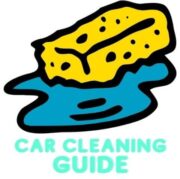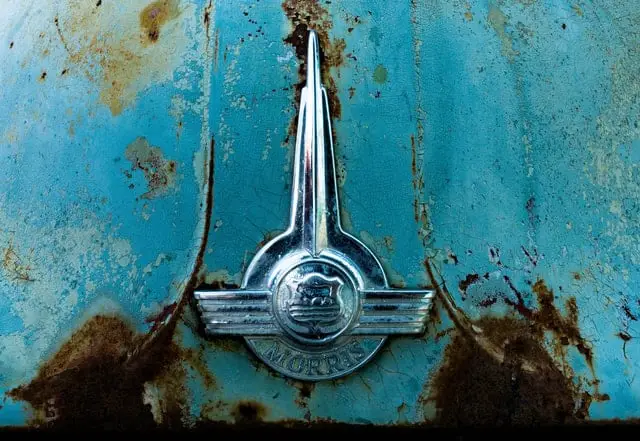Last Updated on January 29, 2024 by Chase Manhattan
Rust bubbles on a car can be an unsightly and frustrating problem. Not only do they ruin the appearance of your vehicle, but they can also lead to more serious issues if left untreated. As someone who has dealt with rust bubbles before, I understand the importance of stopping them from spreading as soon as possible.
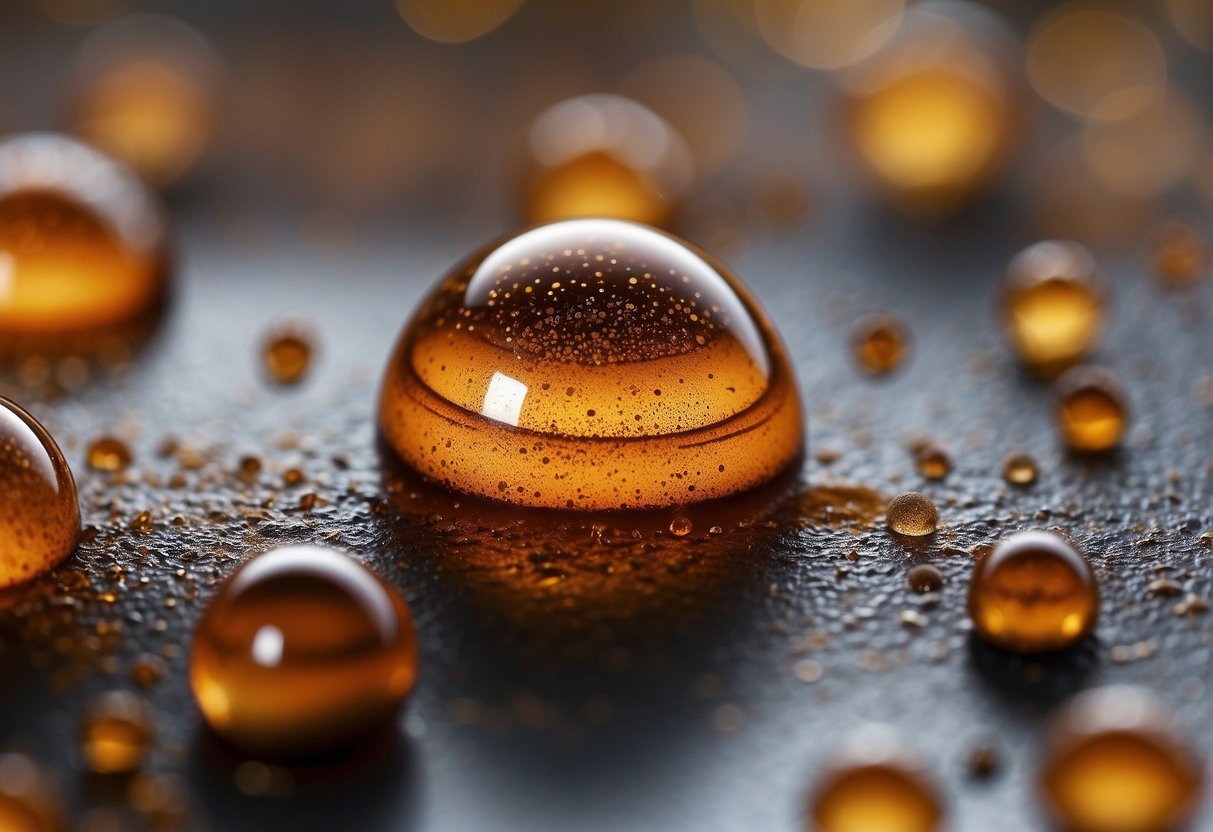
Prevention is key when it comes to rust bubbles. Keeping your car clean and dry can go a long way in preventing rust from forming in the first place. However, if you do notice bubbles forming, it’s important to take action quickly. The longer you wait, the more difficult and expensive it can be to repair.
When it comes to stopping rust bubbles from spreading, there are a few different methods you can try. One popular solution is to use a rust blaster oil and a needle with a tube to pop the bubbles from the top. This helps to release any trapped moisture and prevent the rust from spreading further. Another option is to tape off the affected area and remove the rust using a rust remover or sandpaper. Once the rust is removed, you can apply a rust inhibitor and touch up the paint to prevent future rust from forming.
Quick Navigation
Understanding Rust and Its Causes
Rust is a common problem that affects the appearance and structural integrity of vehicles. It is a type of corrosion that occurs when iron or its alloys, such as steel, react with oxygen and moisture. Rust is a chemical process known as oxidation, and it can be accelerated by various factors.
Chemical Reaction of Rust Formation
The chemical reaction that causes rust formation is simple. Iron reacts with oxygen and moisture to produce iron oxide, which is the reddish-brown substance commonly known as rust. The reaction can be represented by the following equation:
4Fe + 3O2 + 6H2O → 4Fe(OH)3
This means that four molecules of iron (Fe) react with three molecules of oxygen (O2) and six molecules of water (H2O) to produce four molecules of iron hydroxide (Fe(OH)3), which is the main component of rust.
Common Factors Contributing to Rust
There are several factors that can contribute to the formation and spread of rust on a car. Some of the most common factors include:
- Moisture: Water is essential for the chemical reaction that causes rust. Therefore, vehicles that are exposed to rain, snow, or high humidity are more likely to develop rust.
- Salt: Salt is often used to de-ice roads during the winter. However, it can also accelerate the formation of rust on vehicles. Salt can corrode metal surfaces and create an environment that is conducive to rust formation.
- Oxygen: As mentioned earlier, oxygen is one of the main components of rust formation. Vehicles that are exposed to air are more likely to develop rust.
- Iron: Iron is the main component of steel, which is commonly used in the construction of vehicles. Therefore, vehicles made of steel are more susceptible to rust than those made of other materials.
- Corrosion: Corrosion is the process by which metals are gradually destroyed by chemical reactions with their environment. Rust is a type of corrosion that can cause serious damage to vehicles if left unchecked.
By understanding the chemical reaction that causes rust and the common factors that contribute to its formation, you can take steps to prevent rust from spreading on your car. Regular maintenance, including washing and waxing your vehicle, can help protect it from rust. Additionally, keeping your vehicle in a dry environment and avoiding exposure to salt and other corrosive substances can also help prevent rust formation.
Early Detection and Identification
As a car owner, it is important to be proactive when it comes to rust prevention. Early detection and identification of rust bubbles can save you money in the long run by avoiding costly repairs or even the need for a full paint job. Here are some tips to help you recognize the signs of rust bubbles and assess the extent of rust damage.
Recognizing the Signs of Rust Bubbles
Rust bubbles are a common sign of corrosion on a car’s body. They typically start as small, circular spots on the surface of the paint that eventually grow into larger bubbles. These bubbles can be caused by a variety of factors, including scratches, dings, and exposure to moisture.
One way to recognize rust bubbles is to look for discoloration on the surface of the paint. Rust bubbles often appear as small, dark spots that stand out against the surrounding paint. Another way to detect rust bubbles is to run your finger over the surface of the paint. If you feel a rough or bumpy texture, this could be a sign of rust bubbles forming beneath the surface.
Assessing the Extent of Rust Damage
Once you have identified rust bubbles on your car, it is important to assess the extent of the damage. In some cases, rust bubbles may be superficial and can be easily repaired with a touch-up paint job. However, if the rust has spread beneath the surface of the paint, it may require more extensive repairs.
One way to assess the extent of rust damage is to use a flashlight to examine the affected area. Shine the light at an angle across the surface of the paint to look for signs of rust spreading beneath the surface. If you see any signs of rust, it is important to take action as soon as possible to prevent further damage.
In conclusion, early detection and identification of rust bubbles is crucial in preventing further damage to your car’s body. By recognizing the signs of rust bubbles and assessing the extent of rust damage, you can take proactive steps to protect your car and save money on costly repairs.
Preparation for Rust Treatment
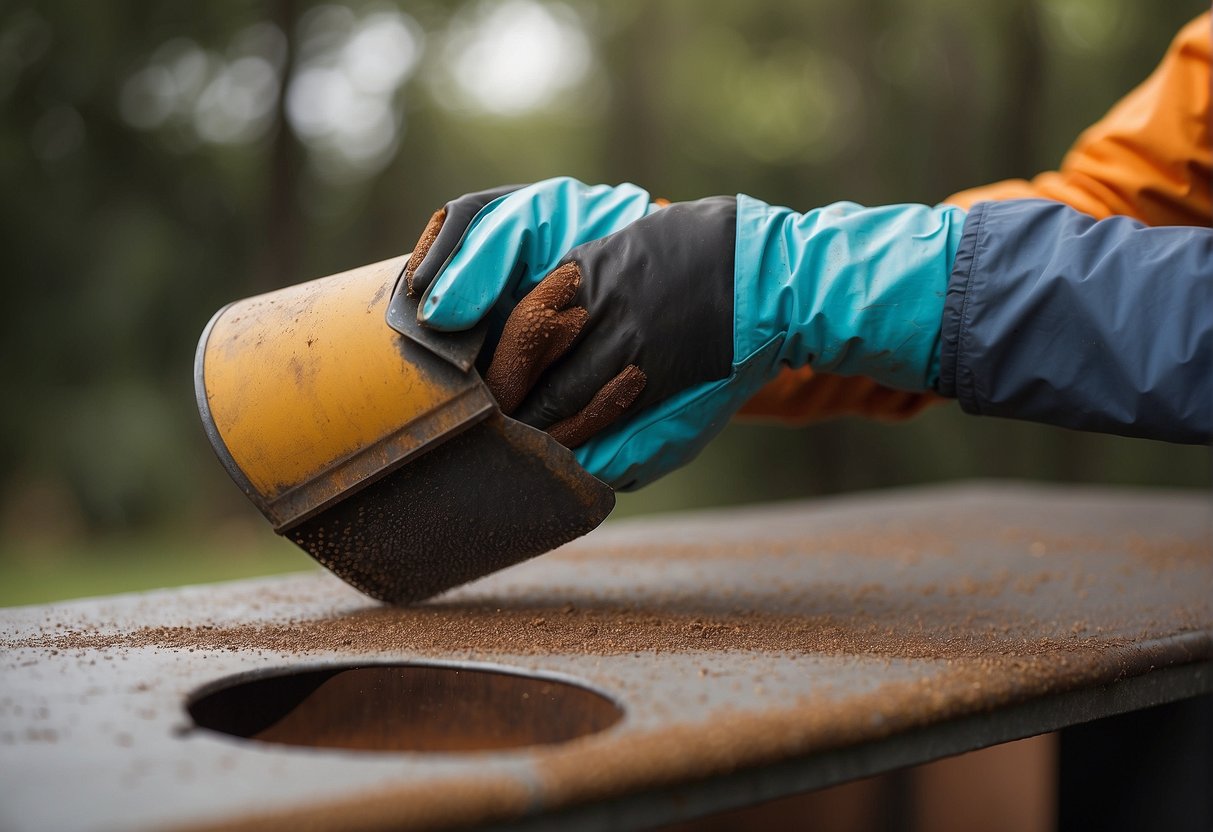
Before treating rust bubbles on your car, it is essential to prepare the affected area to ensure that the rust treatment is effective. Here are the steps I recommend taking before treating rust bubbles on your car:
Cleaning the Affected Area
The first step in preparing the affected area is to clean it thoroughly. Use a microfiber cloth to wipe down the area and remove any loose dirt or debris. Next, use a cleaning solution to remove any grease or oil that may be on the surface. A simple mixture of dish soap and water will do the trick. Once the area is clean, rinse it thoroughly with water and allow it to dry completely.
Removing Loose Rust and Paint
Once the area is clean and dry, it’s time to remove any loose rust and paint. This can be done using sandpaper or a wire wheel. Start with a coarse grit sandpaper or wire wheel to remove the loose rust and paint. Then, switch to a finer grit to smooth out the surface. Be sure to wear gloves and a mask to protect yourself from the dust created during this process.
After removing the loose rust and paint, wipe down the area with a microfiber cloth to remove any remaining dust or debris. At this point, the surface should be clean and smooth, ready for rust treatment.
It’s important to note that rust removal products should only be used on clean, dry surfaces. Applying rust treatment to a dirty or wet surface can reduce its effectiveness. By following these steps, you can ensure that the rust treatment is as effective as possible.
Rust Conversion and Priming

Applying Rust Converter
When dealing with rust bubbles, one of the most effective ways to stop them from spreading is by using a rust converter. Rust converters work by converting the iron oxide in rust into a more stable compound that can be painted over.
To apply rust converter, start by removing any loose rust or debris from the affected area using a wire brush or sandpaper. Then, apply the rust converter according to the manufacturer’s instructions. It’s important to note that some rust converters require a second application for maximum effectiveness.
Choosing and Using the Right Primer
After applying the rust converter, it’s crucial to prime the area to prevent the rust from reappearing. When choosing a primer, it’s important to select one that is compatible with the rust converter you used and the type of paint you plan to apply.
Etching primers are a good choice for bare metal surfaces, as they provide excellent adhesion and help prevent rust from forming underneath the paint. If you’re painting over an existing finish, a high-quality primer that is compatible with the type of paint you’re using is a good choice.
When applying primer, be sure to follow the manufacturer’s instructions and apply it in thin, even coats. Allow the primer to dry completely before sanding and applying the topcoat.
Using a combination of rust converter and primer is an effective way to stop rust bubbles from spreading and ensure a long-lasting, professional-looking finish.
Repairing the Damage
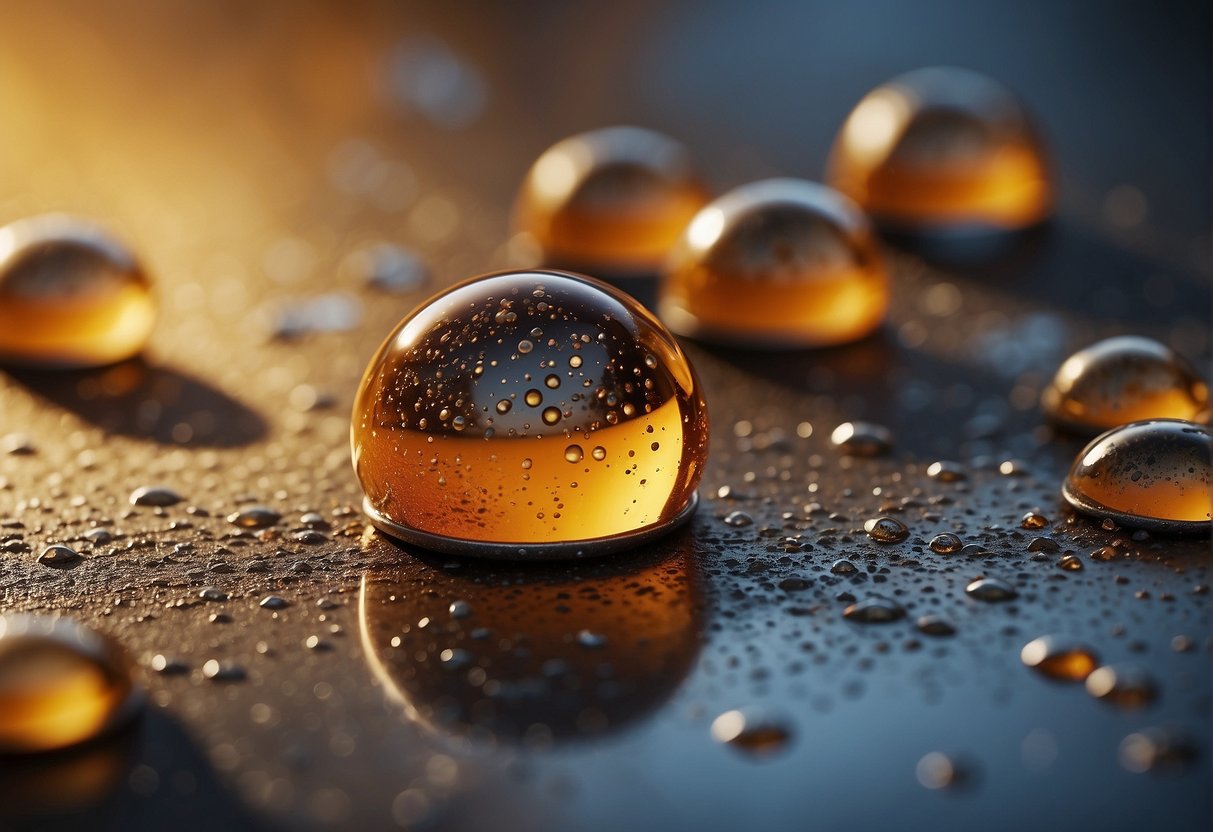
After identifying the rust bubbles on your vehicle, it is important to repair the damage as soon as possible to prevent it from spreading. There are several methods for repairing rust damage, including using body filler and applying patch panels.
Using Body Filler
Body filler is a popular method for repairing rust damage on vehicles. This method involves filling in the damaged area with a putty-like substance and sanding it down to create a smooth surface. Body filler is ideal for repairing small areas of damage, such as rust bubbles.
To use body filler, first, clean the damaged area with a degreaser to remove any dirt or grease. Then, sand the area using a coarse grit sandpaper to remove the rust and create a rough surface for the filler to adhere to. Mix the body filler according to the manufacturer’s instructions and apply it to the damaged area using a putty knife. Allow the filler to dry completely before sanding it down using a fine grit sandpaper to create a smooth surface.
Applying Patch Panels
For larger areas of rust damage, applying patch panels is a more effective method of repair. This method involves cutting out the damaged area and replacing it with a new metal panel. Patch panels are available in various sizes and shapes to fit different areas of the vehicle.
To apply a patch panel, first, use a grinder or cutting tool to remove the damaged area. Then, cut the patch panel to the appropriate size and shape using tin snips or a metal cutting tool. Place the patch panel over the damaged area and use a welding tool to weld it in place. Finally, sand the area to create a smooth surface and apply primer and paint to match the surrounding area.
In conclusion, repairing rust damage on your vehicle is essential to prevent it from spreading and causing further damage. Using body filler or applying patch panels are effective methods for repairing rust bubbles, depending on the size and location of the damage.
Painting and Sealing
When it comes to stopping rust bubbles from spreading, painting and sealing the affected area is an effective solution. This process involves masking off the work area, applying automotive paint and clear coat, and ensuring that the paint is properly cured.
Masking Off the Work Area
Before painting, it is essential to mask off the work area to prevent overspray and ensure that the paint is applied only to the affected area. This can be done using masking tape and paper. Ensure that the tape is placed firmly on the surface to prevent paint from seeping through. It is also important to cover any surrounding areas that may be affected by overspray.
Applying Automotive Paint and Clear Coat
Once the work area is masked off, the next step is to apply automotive paint and clear coat. Automotive paint is available in different colors and finishes, and it is important to choose the right one that matches the color of the vehicle. It is also important to ensure that the paint is compatible with the clear coat.
Using a spray gun, apply a light coat of paint to the affected area, ensuring that the paint is evenly distributed. Allow the paint to dry for a few minutes before applying the next coat. Repeat this process until the desired coverage is achieved. Once the paint is dry, apply the clear coat to protect the paint and ensure that it is properly sealed.
It is important to ensure that the paint and clear coat are properly cured before exposing the vehicle to the elements. This can take anywhere from a few days to a few weeks, depending on the type of paint and clear coat used.
Overall, painting and sealing the affected area is an effective solution for stopping rust bubbles from spreading. It is important to follow the proper procedure and ensure that the paint and clear coat are properly cured to ensure long-lasting protection against rust.
Preventative Measures
As a car owner, I understand the importance of preventing rust bubbles from spreading on my vehicle. Rust not only looks unsightly, but it can also weaken the structural integrity of the car and lead to costly repairs. Here are some preventative measures I take to ensure my car stays rust-free:
Regular Maintenance and Inspection
Regular maintenance and inspection of your vehicle can go a long way in preventing rust. I make sure to wash my car regularly to remove any dirt or debris that may cause scratches or chips in the paint. I also inspect my car for any signs of rust or damage, such as bubbling or flaking paint. If I notice any issues, I address them promptly before they have a chance to spread.
Protective Coatings and Products
There are many protective coatings and products available that can help prevent rust on your car. One of the best products I’ve found is rust paint, which can be applied directly to the affected area to stop rust in its tracks. I also use a rust shield on my car to protect it from the elements, such as salt and moisture, which can cause rust.
When choosing protective coatings and products, make sure to do your research and choose the best ones for your specific car and needs. Some products may work better than others depending on the type of car you have and the climate you live in.
By taking these preventative measures, I have been able to keep my car rust-free and looking great. Regular maintenance and inspection, along with the use of protective coatings and products, are key to preventing rust and ensuring the longevity of your vehicle.
Understanding the Impact on Vehicle Integrity
As a car owner, it is essential to understand the impact of rust bubbles on the structural integrity of your vehicle. Rust bubbles are not only unsightly but can also cause significant damage to your car’s body if left untreated. In this section, I will discuss the implications of rust on vehicle integrity and resale value.
Structural Implications of Rust
Rust bubbles can weaken the structural integrity of your car’s body, making it more susceptible to damage. The frame and body of your vehicle are designed to provide structural support and protect you in the event of an accident. Rust can cause the metal to become brittle, leading to cracking and ultimately compromising the safety of your car.
Moreover, rust can spread and affect larger areas of your car’s body. This can lead to more severe structural damage, making it more expensive to repair. Therefore, it is crucial to address rust bubbles promptly to prevent further damage to your car’s metal structure.
Rust and Vehicle Resale Value
Rust bubbles can also significantly impact the resale value of your vehicle. A rusted car is less desirable to potential buyers, and they may offer a lower price or avoid purchasing it altogether. Therefore, it is essential to maintain your car’s appearance and prevent rust from spreading.
To preserve the aesthetic appeal of your vehicle and prevent rust from impacting its resale value, it is essential to address rust bubbles promptly. Repairing the bubbles helps maintain the integrity of your car’s body and ensures that it remains structurally sound.
In conclusion, rust bubbles can have severe implications on your car’s structural integrity and resale value. Therefore, it is crucial to address them promptly and take preventive measures to prevent rust from spreading.
Safety Considerations
When working on a vehicle with rust bubbles, it is crucial to take safety considerations seriously. Here are some personal protective equipment and safe work practices that I follow to ensure my safety and avoid any accidents.
Personal Protective Equipment
Personal protective equipment (PPE) is essential when working on a vehicle. The following PPE should be worn at all times:
- Eye protection: Rust particles can easily fly into your eyes, causing irritation or even more severe damage. Wearing safety glasses or goggles is a must.
- Masking paper: When sanding or grinding rust, it is essential to have a masking paper to prevent rust particles from entering your respiratory system.
- Painter’s tape: This tape helps to protect the surrounding areas from damage during the repair process.
Safe Work Practices
In addition to PPE, there are some safe work practices that I follow to avoid any accidents or injuries:
- Work in a well-ventilated area: Rust particles can cause respiratory problems, so it is essential to work in a well-ventilated area or use a respirator.
- Use the right tools: Using the right tools for the job can make the process safer and more efficient.
- Keep the work area clean: Keeping the work area clean and free of clutter can help prevent accidents.
- Follow manufacturer instructions: Always follow the manufacturer’s instructions for any products used during the repair process.
By following these safety considerations and safe work practices, you can ensure that you complete the repair process safely and effectively.
Frequently Asked Questions
What steps can be taken to prevent rust bubbles from growing on my vehicle?
To prevent rust bubbles from forming on your vehicle, you should take some measures such as keeping your car clean and dry, avoiding exposing it to saltwater, and applying a rust inhibitor or a protective coating. Rust bubbles are often caused by moisture and saltwater, so it is essential to keep your car as dry as possible.
Can applying a rust inhibitor effectively halt the progression of rust bubbles?
Yes, applying a rust inhibitor can effectively halt the progression of rust bubbles. Rust inhibitors work by creating a barrier between the metal surface and the environment, preventing moisture and oxygen from reaching the metal and causing rust. Rust inhibitors are available in spray or liquid form and can be applied directly to the affected area.
What are the typical costs associated with repairing rust bubbles?
The cost of repairing rust bubbles can vary depending on the severity of the damage and the type of repair needed. Minor rust bubbles can be fixed with a DIY kit, which costs around $20 to $50. However, more extensive damage may require professional assistance and can cost anywhere from $200 to $1000 or more.
Is there a DIY method for fixing rust bubbles on car wheel arches?
Yes, there are DIY methods for fixing rust bubbles on car wheel arches. One method is to sand off the rust and apply a rust converter, which will convert the rust into a stable compound that can be painted over. Another method is to use a rust repair kit, which contains all the necessary tools and materials for repairing rust bubbles.
How can I identify and address the underlying causes of rust bubbles under paint?
The underlying causes of rust bubbles under paint are often related to moisture and saltwater. To identify and address these causes, you should inspect your car regularly for signs of rust bubbles, keep it clean and dry, and avoid exposing it to saltwater. Applying a rust inhibitor or a protective coating can also help prevent rust bubbles from forming.
What are the best rust bubble repair kits currently available on the market?
There are many rust bubble repair kits available on the market, and the best one for you will depend on your specific needs and the severity of the damage. Some popular options include the POR-15 Rust Preventive Coating, the Rust-Oleum Automotive Rust Reformer, and the Rust Bullet Automotive. It is important to follow the instructions carefully and choose a kit that is appropriate for the type of damage you are dealing with.
